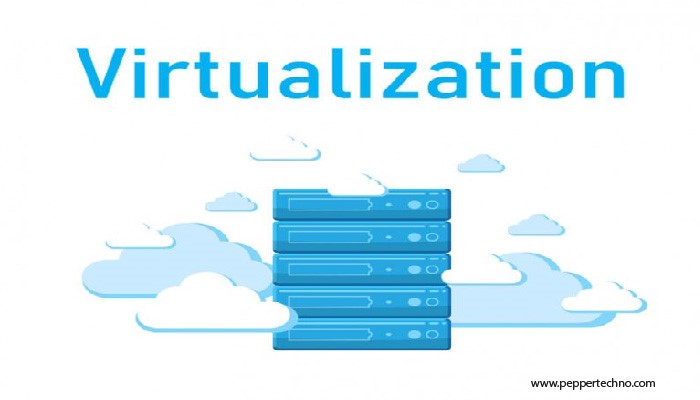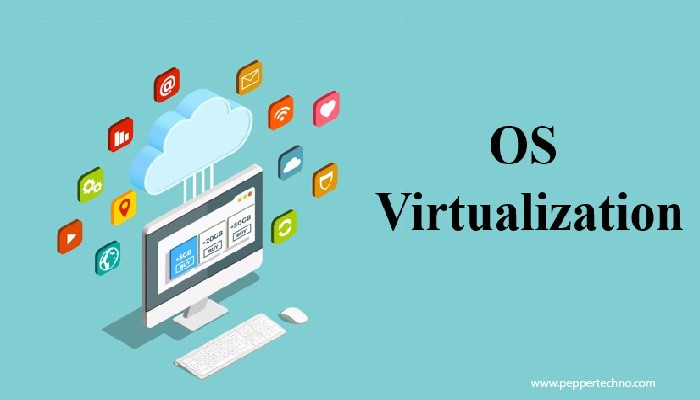Virtual Vistas: Exploring the Landscape of Virtualization Systems
Welcome to the world of Virtual Vistas! In today’s fast-paced digital landscape, virtualization systems have become a cornerstone for businesses and organizations looking to optimize their IT infrastructure. By delving into the realm of virtualization systems, we uncover a universe where technology meets innovation to revolutionize how we operate in the digital sphere. Join us on this exploration as we navigate through the intricacies, benefits, challenges, and future trends of virtualization systems. Let’s embark on this exciting journey together!

Types of Virtualization Systems
When it comes to virtualization systems, there are several types that cater to different needs and requirements. One common type is server virtualization, which allows multiple virtual servers to run on a single physical server. This helps optimize resources and improve efficiency.
Desktop virtualization is another popular type that enables users to access their desktop environment remotely from any device. This enhances flexibility and accessibility for users working in diverse locations.
Network virtualization is essential for creating isolated networks within a shared infrastructure, enhancing security and scalability. Storage virtualization consolidates multiple storage devices into a single pool, simplifying management and increasing utilization rates.
Application virtualization isolates applications from the underlying operating system, improving compatibility and reducing conflicts. Each type of virtualization system plays a crucial role in modern IT environments, offering unique benefits and solutions for businesses and organizations seeking optimization.
Benefits of Virtualization for Businesses and Organizations
Virtualization systems offer a myriad of benefits for businesses and organizations looking to streamline their operations and enhance efficiency. One significant advantage is cost savings, as virtualization allows companies to reduce hardware expenses by consolidating multiple servers onto one physical machine. This consolidation also leads to decreased energy consumption, lowering utility bills in the long run.
Moreover, virtualization enhances flexibility and scalability, enabling companies to easily adjust resources based on demand without the need for extensive hardware upgrades. It also provides improved disaster recovery capabilities by allowing for quick backups and seamless data migration in case of system failures or emergencies.
Furthermore, virtualization contributes to increased productivity by reducing downtime during maintenance tasks or upgrades. Employees can access applications and data from anywhere at any time, fostering collaboration and remote work possibilities. Adopting virtualization systems can transform how businesses operate and drive innovation within their industry.
Challenges and Risks of Virtualization
Virtualization systems offer many benefits, but they also come with their fair share of challenges and risks. One common challenge is the potential for performance issues when multiple virtual machines compete for resources on the same physical server. This can lead to decreased efficiency and slower processing speeds.
Security concerns are another significant risk associated with virtualization. Since multiple virtual machines share the same hardware, there is a higher risk of one compromised machine affecting others on the same server. It’s essential to implement robust security measures to mitigate this risk and protect sensitive data from potential breaches.
Additionally, managing a complex virtualized environment can be daunting for IT teams. Ensuring compatibility between different operating systems and applications, monitoring performance across multiple virtual machines, and troubleshooting issues efficiently require specialized skills and expertise.
To address these challenges effectively, businesses must invest in proper training for their IT staff; implement comprehensive backup and disaster recovery plans, regularly update software patches to prevent vulnerabilities, and conduct thorough security audits to identify any weaknesses in their virtualized infrastructure.
Top Virtualization Systems in the Market
When it comes to virtualization systems, there are several top players in the market that cater to different needs and preferences. One of the leading virtualization platforms is VMware sphere, known for its robust features and scalability. With a wide range of tools and capabilities, it’s a popular choice for businesses looking to optimize their virtual infrastructure.
Another prominent player in the field is Microsoft Hyper-V, offering seamless integration with Windows environments and strong security features. For those seeking open-source solutions, KVM (Kernel-based Virtual Machine) stands out as a reliable option with high performance levels.
Citrix Hypervisor is also worth mentioning for its user-friendly interface and advanced management functionalities. And not forgetting about Oracle VM Virtual Box which is favoured by many for its ease of use and flexibility in running multiple operating systems on a single machine.
Each of these top virtualization systems brings unique strengths to the table, catering to diverse requirements in the ever-evolving landscape of technology.
How to Choose the Right Virtualization System for Your Needs
When it comes to choosing the right virtualization system for your needs, there are a few key factors to consider. First and foremost, assess your specific requirements and goals. Do you need a solution for consolidating servers, improving disaster recovery capabilities, or enhancing flexibility in resource allocation?
Next, evaluate the scalability of the virtualization system. Will it be able to accommodate your future growth and evolving IT demands? Consider factors like performance optimization, ease of management, and compatibility with existing infrastructure.
Additionally, take into account the level of support offered by the vendor. A reliable support system can make a significant difference in resolving issues promptly and ensuring smooth operations.
Don’t forget about security considerations. Look for features such as encryption mechanisms, access controls, and compliance certifications to safeguard your sensitive data.
By carefully considering these aspects and conducting thorough research on different virtualization systems in the market, you can make an informed decision that aligns with your organization’s unique requirements.
The Future of Virtualization: Emerging Trends and Technologies
As technology continues to evolve, the future of virtualization systems looks incredibly promising. Emerging trends and technologies are set to revolutionize the way businesses and organizations utilize virtualization for their operations. One key trend on the horizon is the increased integration of artificial intelligence and machine learning into virtualization platforms.
These advancements will enable systems to become more intelligent, predictive, and efficient in managing workloads and resources. Another exciting development is the growing focus on edge computing within virtualized environments. This shift towards decentralized processing at the network edge will enhance performance, reduce latency, and improve overall scalability.
Moreover, containerization technologies like Docker and Kubernetes are gaining momentum within virtualization landscapes. By enabling faster deployment of applications across different environments, containers are poised to streamline processes and enhance flexibility for users. With these innovations shaping the future of virtualization systems, we can expect a dynamic landscape that continually pushes boundaries and drives efficiency in various industries.
Conclusion
Virtualization systems have revolutionized the way businesses and organizations operate in the digital landscape. With a myriad of benefits such as cost savings, improved efficiency, and scalability, virtualization has become an essential tool for modern IT infrastructure.
However, it is crucial to be aware of the challenges and risks associated with virtualization, including security vulnerabilities and potential performance issues. By choosing the right virtualization system that aligns with your specific needs and requirements, you can mitigate these risks while maximizing the advantages of virtualization.
As technology continues to evolve rapidly, we can anticipate even more innovative trends and technologies emerging in the field of virtualization. Staying informed and adapting to these changes will be key for businesses looking to stay competitive in a dynamic market environment.
Embracing virtualization systems offers immense opportunities for growth, efficiency improvements, and strategic advantage. By understanding its nuances, leveraging its benefits effectively, and staying ahead of evolving trends, businesses can unlock new possibilities for success in an increasingly digital world.



